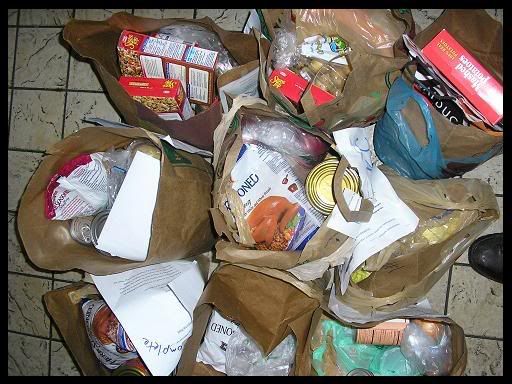
The bags contained many items that the clients could use to make their Thanksgiving meals even better.
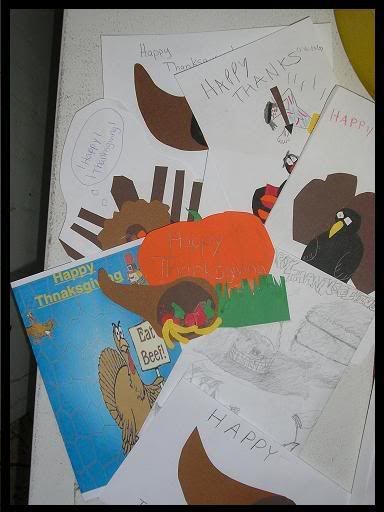
The cards were a great way to engage the clients upon delivery. It gave the volunteers a way to talk with them moreso than usual.
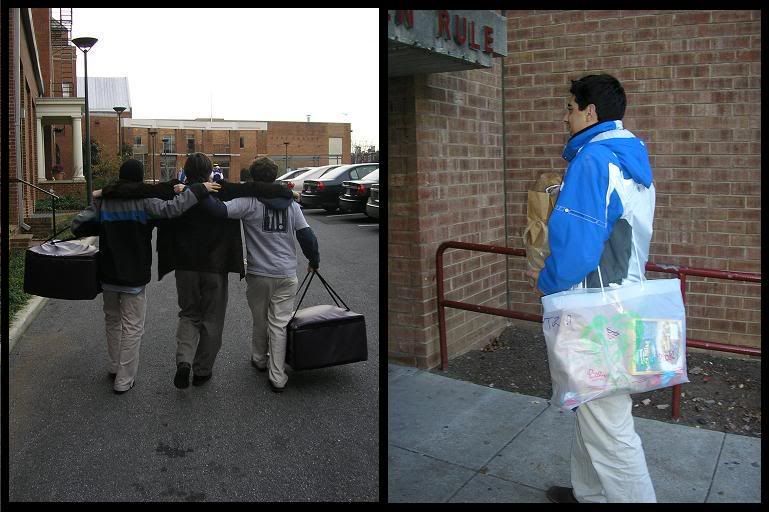



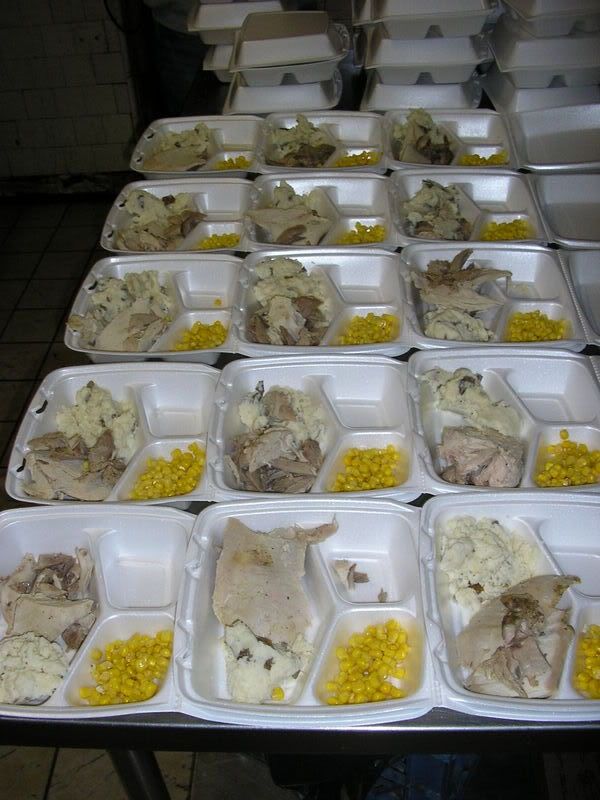
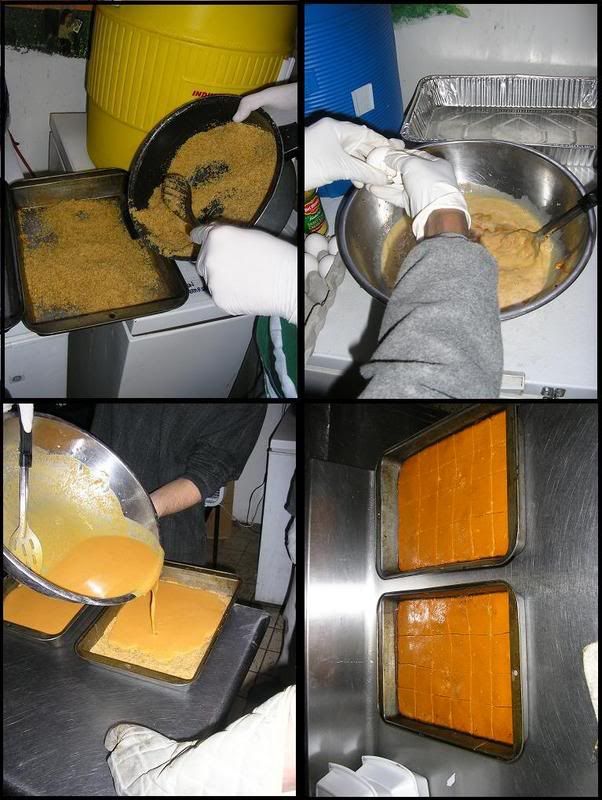
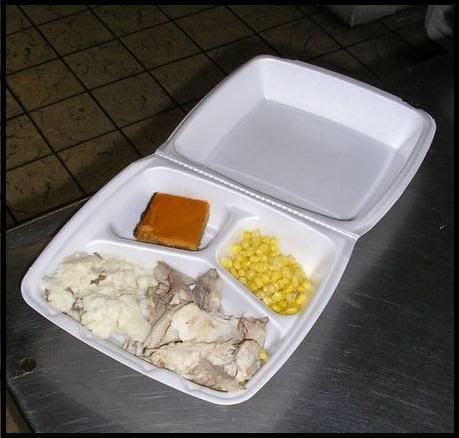 The next (and final) step was to deliver the meals to our clients.
The next (and final) step was to deliver the meals to our clients.
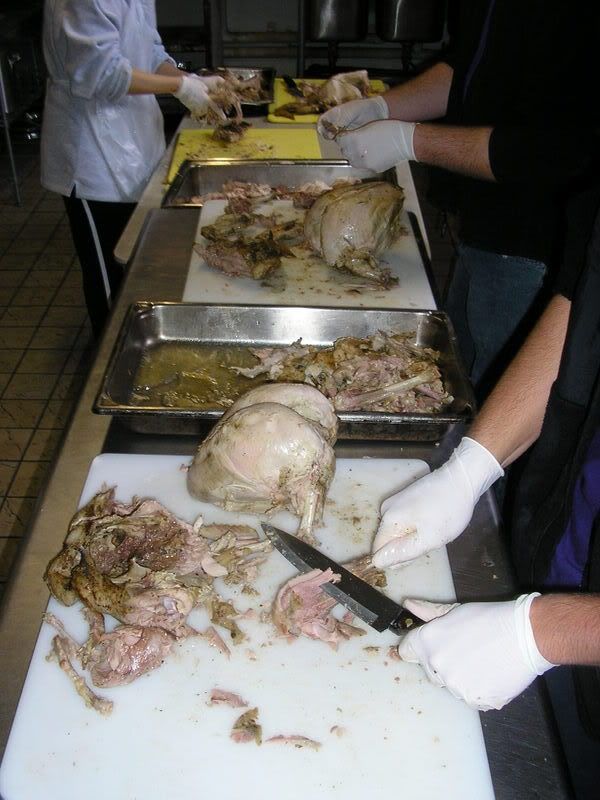
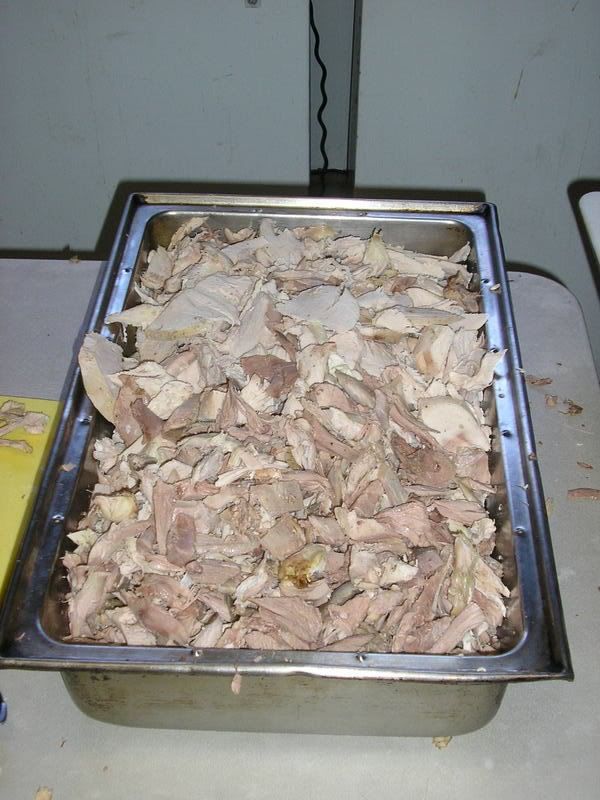
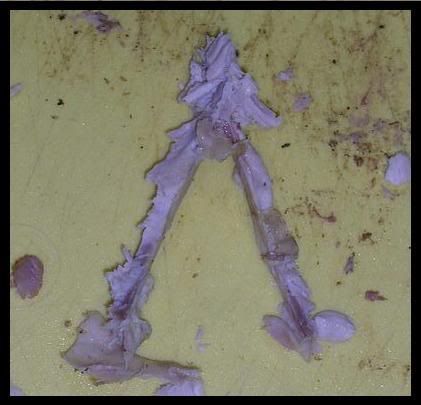
Since they had been defrosting for a few days, the first step was to clean the turkeys. We had to remove the neck and giblets, which scared away some of the volunteers. The majority of volunteers weren't interested in having any part of this process, but one leadership team member stepped up to the plate.
After the turkeys were patted dry, the next step was to season them. We used poultry seasoning and oil and had the volunteers spread it all over the turkey. One mistake we made was not folding the leg under the bird prior to adding the oil. This made the leg very difficult to stay in place.
After all was said and done, it took about 8 hours to cook the turkeys, wait for them to cool, and then store them properly. The turkeys looked and smelled delicious.
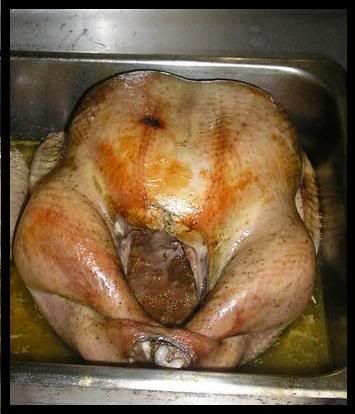
Almost ready to eat!
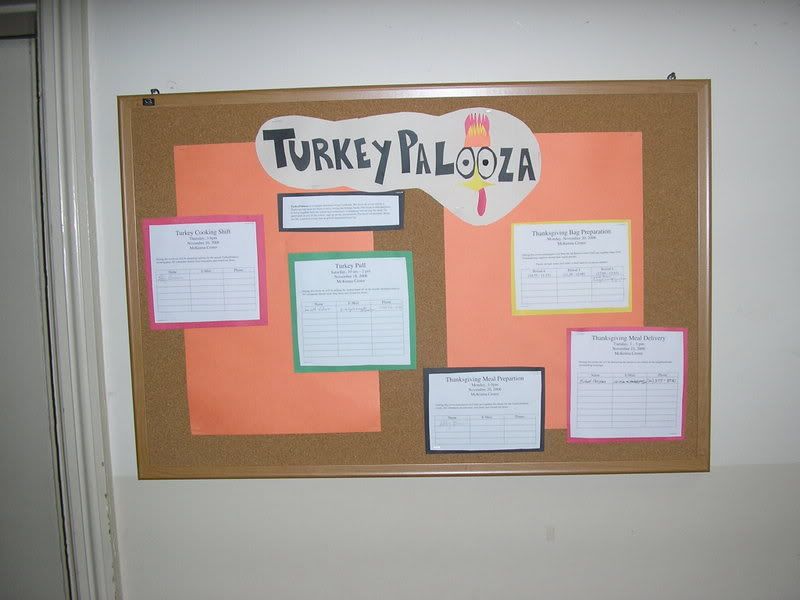
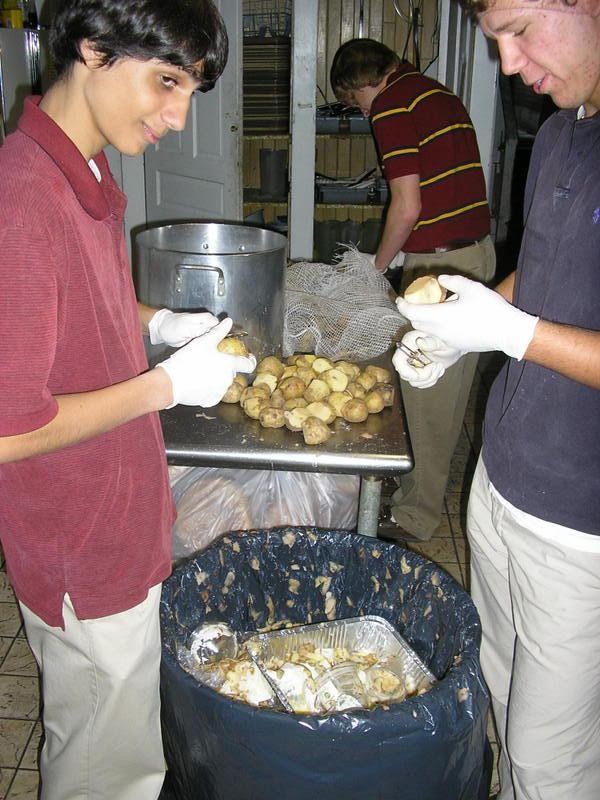
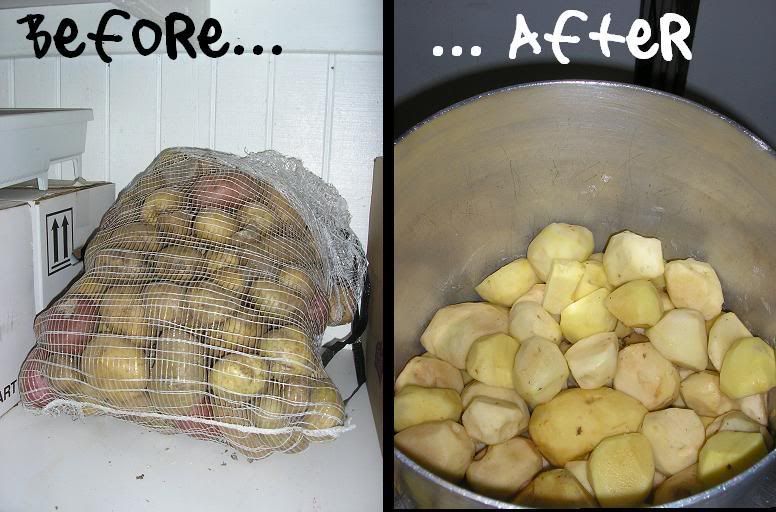
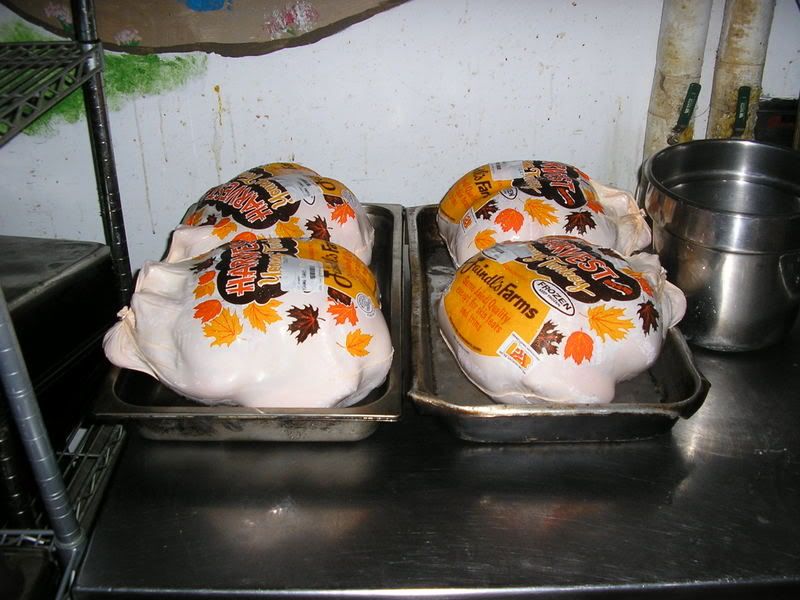
More than the food and networking, however, it's a great fundraiser for the Central Kitchen, which helps Washington's homeless community by providing both fresh food and job training for work in the food industry.The big event takes place one week from tomorrow, and I've heard it's always a blast. For more information on the event, check out the official site.
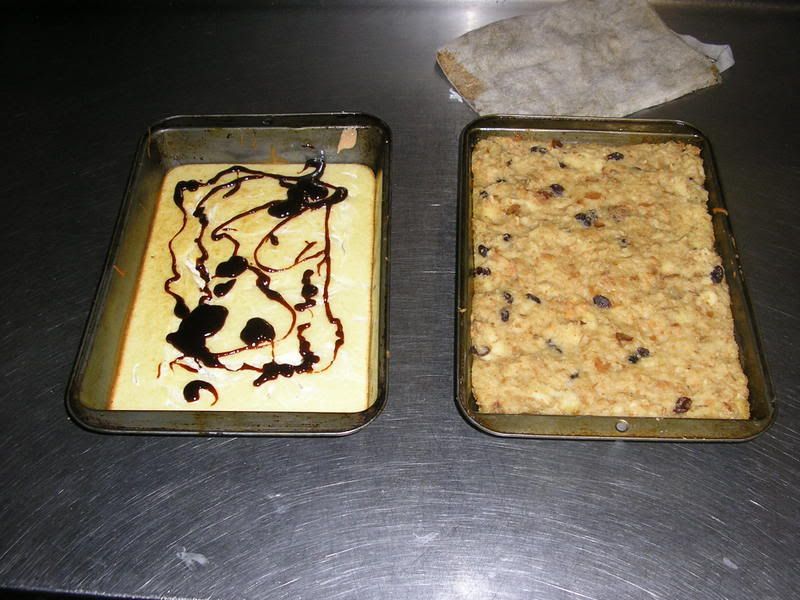
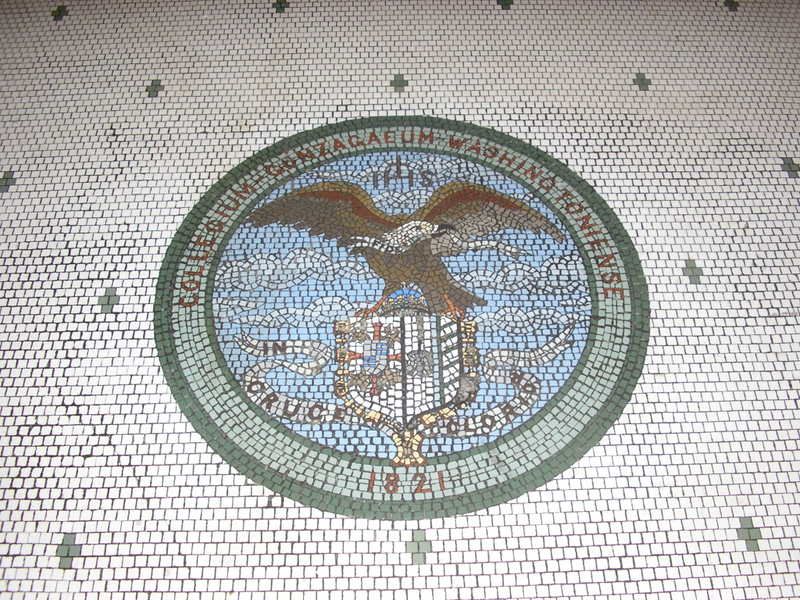 The following is a three part account of the CKP Student Leadership Conference. (Part 1 of the recap. Part 2 of the recap.) Click here for more first-hand accounts of the conference.
The following is a three part account of the CKP Student Leadership Conference. (Part 1 of the recap. Part 2 of the recap.) Click here for more first-hand accounts of the conference.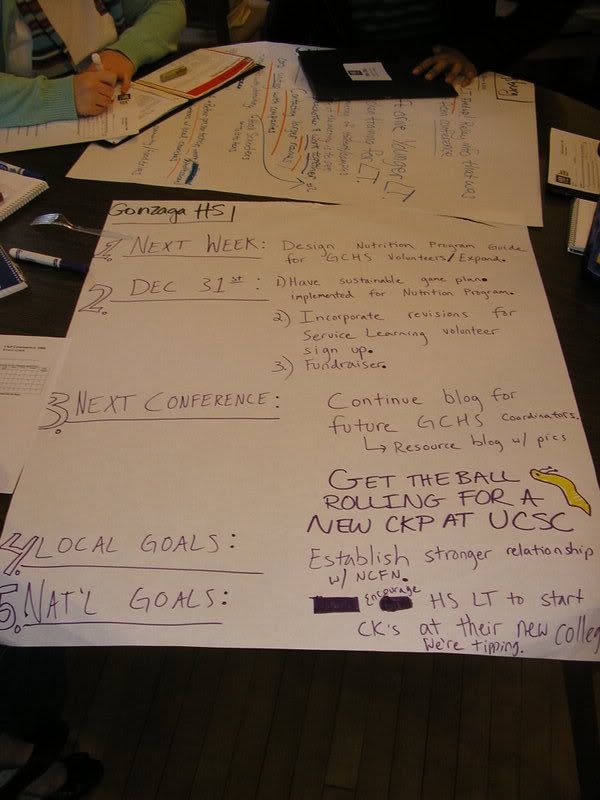

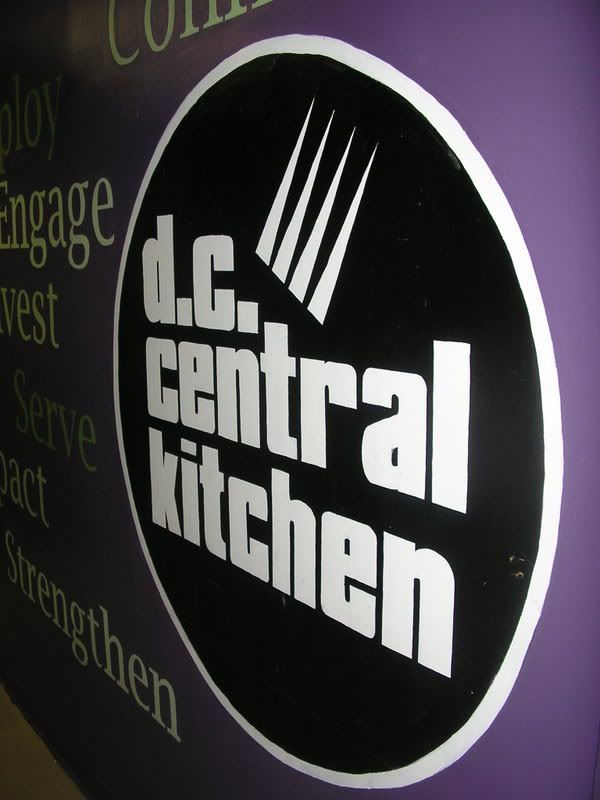 The following is an account of the CKP Student Leadership conference. (Part 1 of the recap. Part 3 of the recap.) Click here for more first-hand accounts of the conference.
The following is an account of the CKP Student Leadership conference. (Part 1 of the recap. Part 3 of the recap.) Click here for more first-hand accounts of the conference.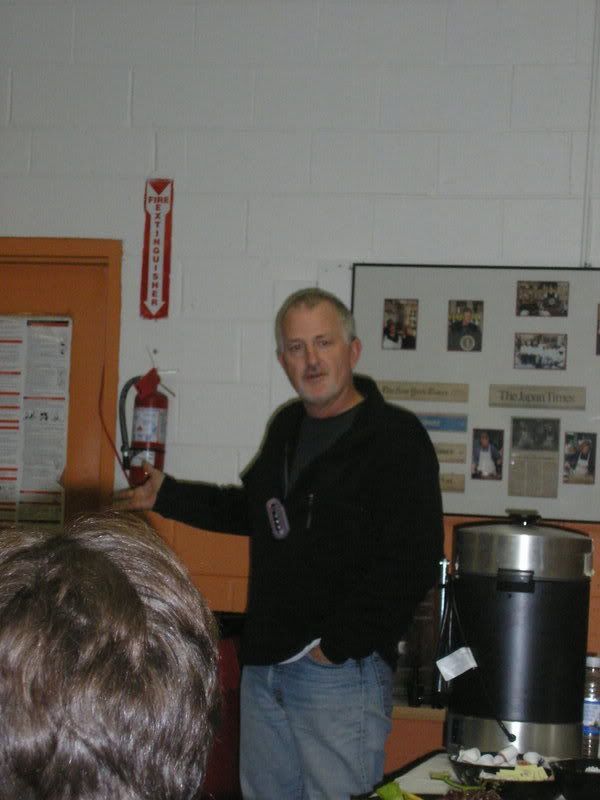 Following the cooking shift, DC Central Kitchen founder Robert Egger (Pictured Right) spoke with the group. Robert is one of the best speakers I have ever had the pleasure of hearing. The first time I ever heard him speak was at the 64th Graduation class of DC Central Kitchen's culinary job training course, and he keeps getting better ever time I hear him. The main aspect of his talk that I will remember is his analogy of the wishbone and the backbone. There are two bones one can cook with, the wishbone and the backbone. The wishbone will make thin soup, but the backbone will provide a full meal. In short, if you really want to start cooking, you're going to need the backbone.
Following the cooking shift, DC Central Kitchen founder Robert Egger (Pictured Right) spoke with the group. Robert is one of the best speakers I have ever had the pleasure of hearing. The first time I ever heard him speak was at the 64th Graduation class of DC Central Kitchen's culinary job training course, and he keeps getting better ever time I hear him. The main aspect of his talk that I will remember is his analogy of the wishbone and the backbone. There are two bones one can cook with, the wishbone and the backbone. The wishbone will make thin soup, but the backbone will provide a full meal. In short, if you really want to start cooking, you're going to need the backbone.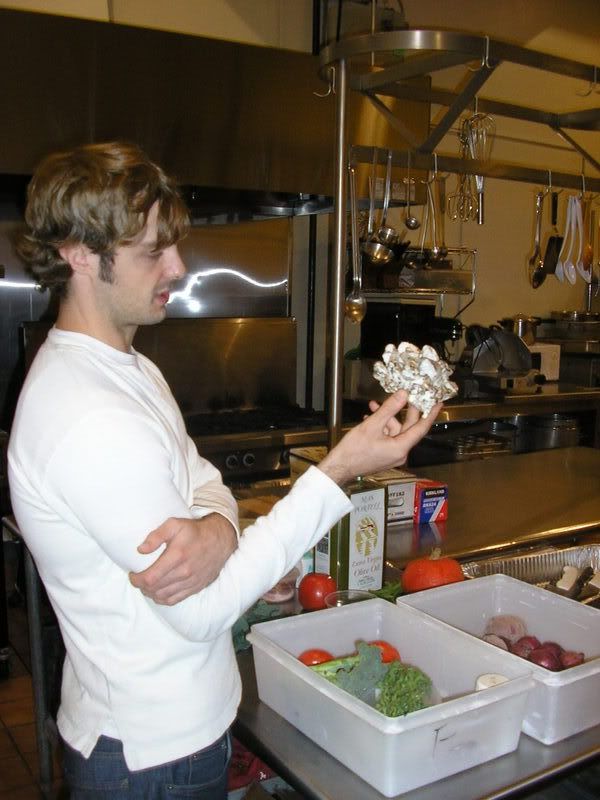 While there, we had a cooking exercise taught by Barton Seaver (Pictured Left). Barton is the executive chef at two of D.C.'s finest restaurants, Bar Pilar and Café Saint-Ex. I thought it was fascinating that an accomplished chef who has travelled extensively around the world would be such a proponent of locally grown food. As his hat read, "No farms, no food." Barton brought a bunch of fresh, locally purchased, organic ingrediants for us to cook with. These included: tomatoes, potatoes, onions, mushrooms, vegetable oil, lemons, green beans, sausage, and bacon among many others.
While there, we had a cooking exercise taught by Barton Seaver (Pictured Left). Barton is the executive chef at two of D.C.'s finest restaurants, Bar Pilar and Café Saint-Ex. I thought it was fascinating that an accomplished chef who has travelled extensively around the world would be such a proponent of locally grown food. As his hat read, "No farms, no food." Barton brought a bunch of fresh, locally purchased, organic ingrediants for us to cook with. These included: tomatoes, potatoes, onions, mushrooms, vegetable oil, lemons, green beans, sausage, and bacon among many others. After hearing Barton speak about the possible uses of all the fresh veggies, we split up into small groups and experimented with all the possibilities. Becky from CKP, Jen from Northwestern and I worked on a little dish with tomatoes, onions, mushrooms, and cheese.
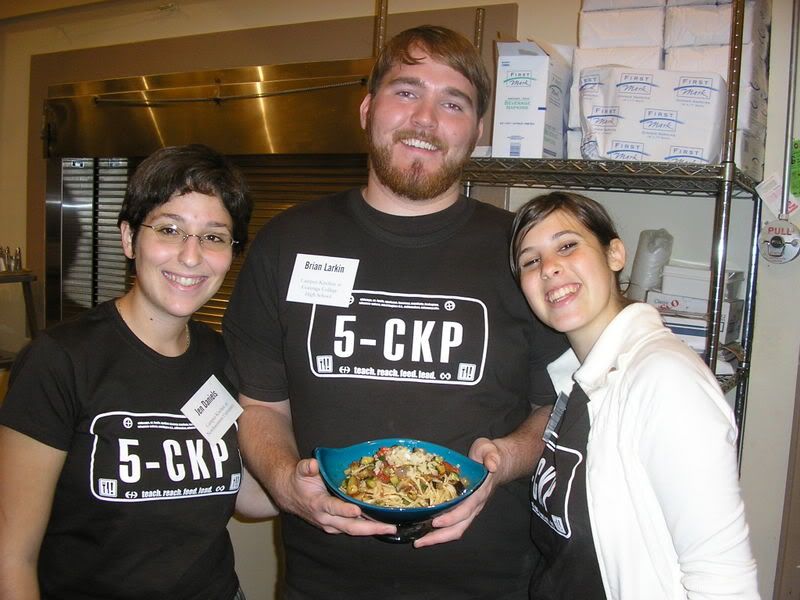 ... make delicious pasta! (L-R: Jen, Brian, Becky)
... make delicious pasta! (L-R: Jen, Brian, Becky)
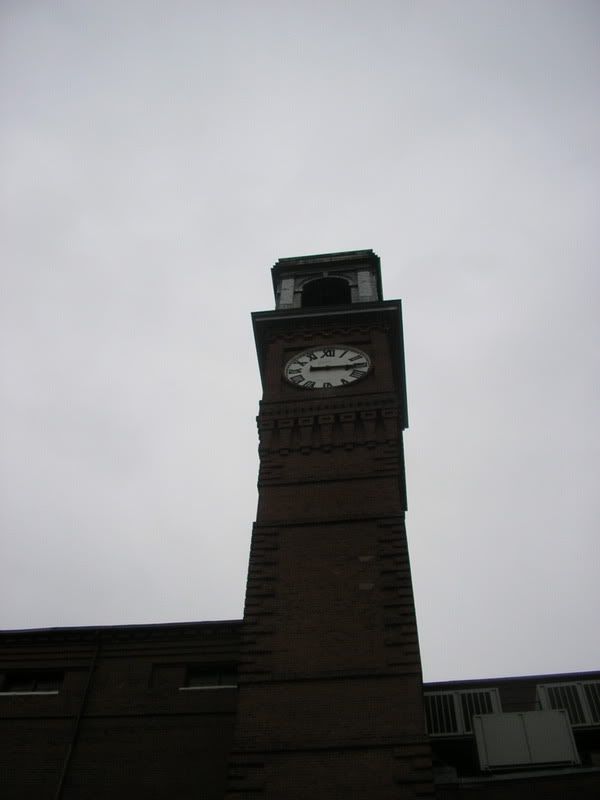 The following is a three part account of the CKP Student Leadership conference. (Part 2 of the recap. Part 3 of the recap.) Click here for more first-hand accounts of the conference.
The following is a three part account of the CKP Student Leadership conference. (Part 2 of the recap. Part 3 of the recap.) Click here for more first-hand accounts of the conference.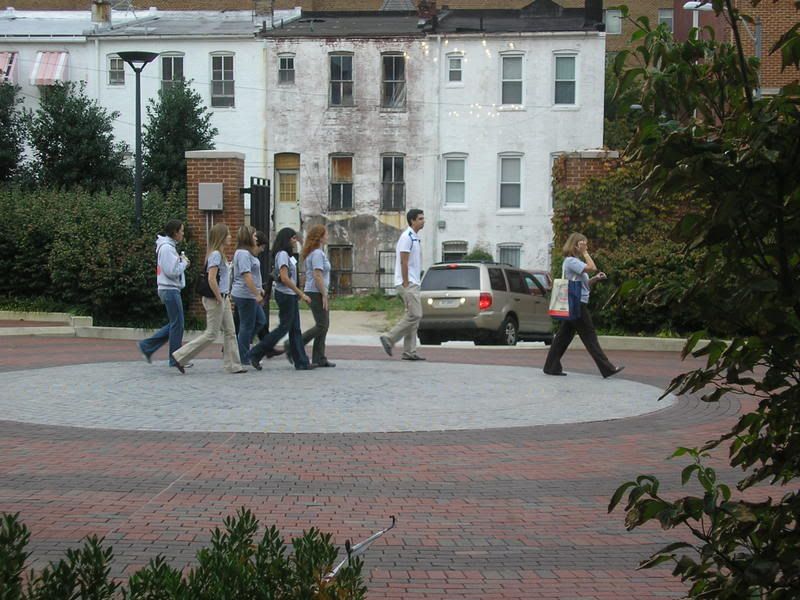
Afterwards, we had speakers from Gonzaga, the McKenna Center, DC Central Kitchen and the Campus Kitchens Project's national office. Mike Curtin, the Chief Operation Officer at DCCK as well as a Gonzaga graduate, spoke with the 40 or so people in attendance.
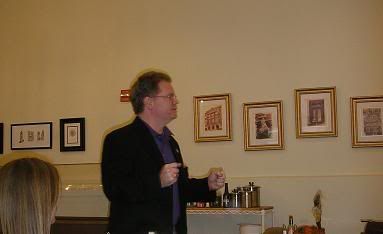
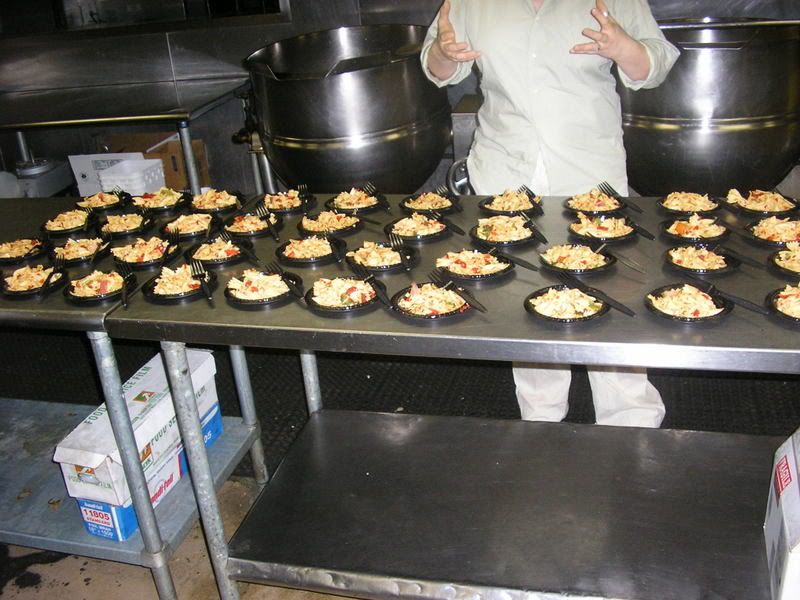
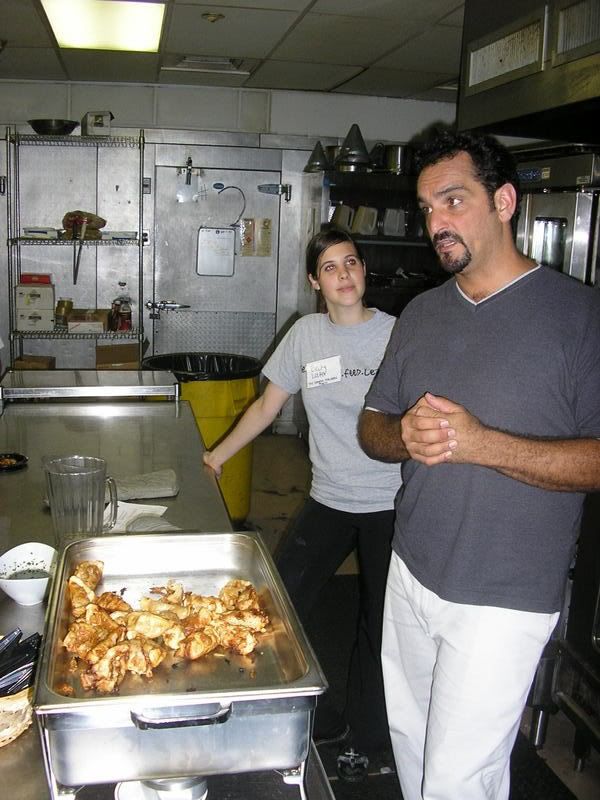
Both Becky and myself put a lot of work into the event, and we were very nervous about how it would turn out. We went to one of our usual delivery locations, and instead of dropping off meals, we taught a group of children an educational and fun nutrition lesson. At the end, we provided them with a nutritious treat. We weren't sure how the lesson was going to go, but in the end it turned out fantastic! The lesson went better than I could have imagined.
We had three volunteers show up, Sean, Jon, and Kevin. Before we went over to the location, the five of us finalized our game plan at the high school. The three volunteers were excellent about taking on the responsibility of teaching parts of the lesson. I was worried that they would just stand around, but they interacted with the students and went above and beyond my expectations. For future lessons, I'll try to get the volunteers more involved earlier and have a bigger say in what the lesson plan will be.
The only downside of the lesson was that there were only six people present, short of the 15-20 people we expected. We would have loved to have more people, but with the smaller number we were able to make a bigger impact. Also, the children were all able to participate. All the kids had their say in the lesson, and everyone got a chance to speak up.
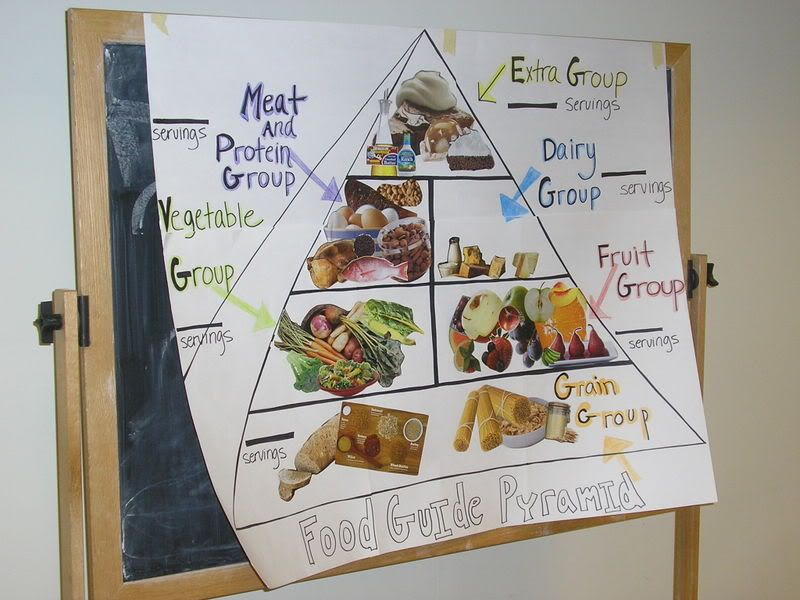
The lesson itself went very well. We had an ice-breaker in the beginning to get everyone talking. The three volunteers, Becky and myself all got a chance to teach part of the lesson. Our main goal was to inform about the food pyramid as well as stress the importance of eating breakfast. The kids knew a lot to begin with, and they were very eager to answer all our questions. At the end of the nutrition lesson, we had all the kids line up to make a healthy snack.
For the snack at the end of the lesson, we made Crunchy Granola Yogurt Parfaits. The ingredients for the treat included both plain and strawberry yogurt, crunchy granola, raisins, chocolate chips, and banana chips. The students were very creative in making their snacks, mixing and matching all the different ingredients.
It was so nice to see everyone enjoying their treats. One student even made an extra one to take up to his grandmother. This was an awesome end to an awesome lesson.
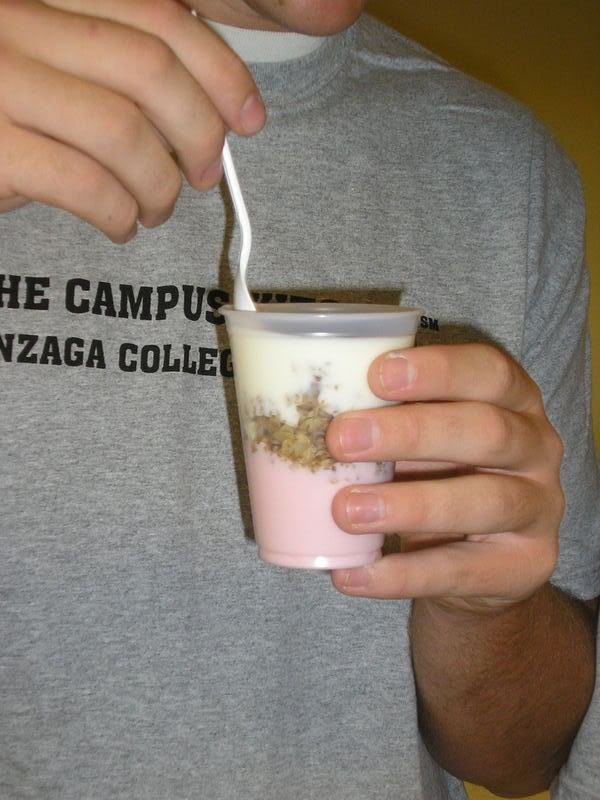
The fruits of our labor!
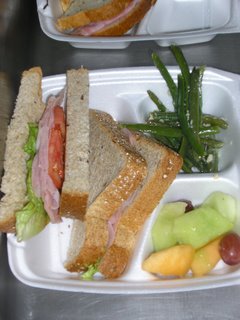
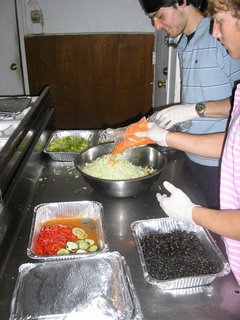
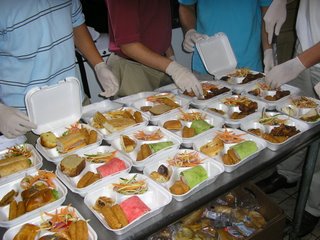 Colorful wraps!
Colorful wraps! 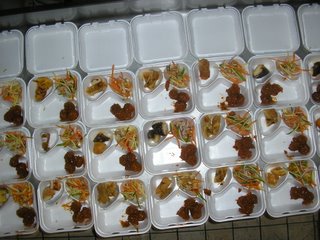
Overall, it wasn't the best meal in terms of combination, but the food looked delicious. All of the student volunteers agreed that they would definitely eat the meals.
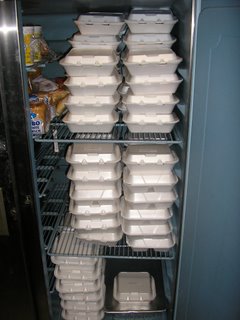
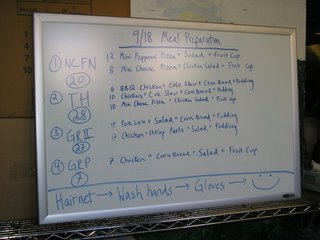
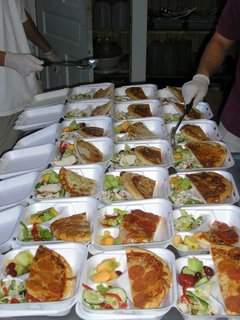
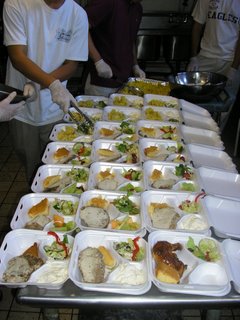
The program is a unique partnership between Gonzaga College High School’s Service Learning Office and The Campus Kitchens Project, working together with local non-profit organizations to provide hunger relief. Gonzaga College High School is the first Campus Kitchen at the high school level and the only operation located in Washington, D.C. to be part of The Campus Kitchens Project, which began in 2001 and includes nine other schools. With its focus on service to the community and student leadership development, The Campus Kitchens Project is a perfect fit for the mission of Gonzaga College High School.